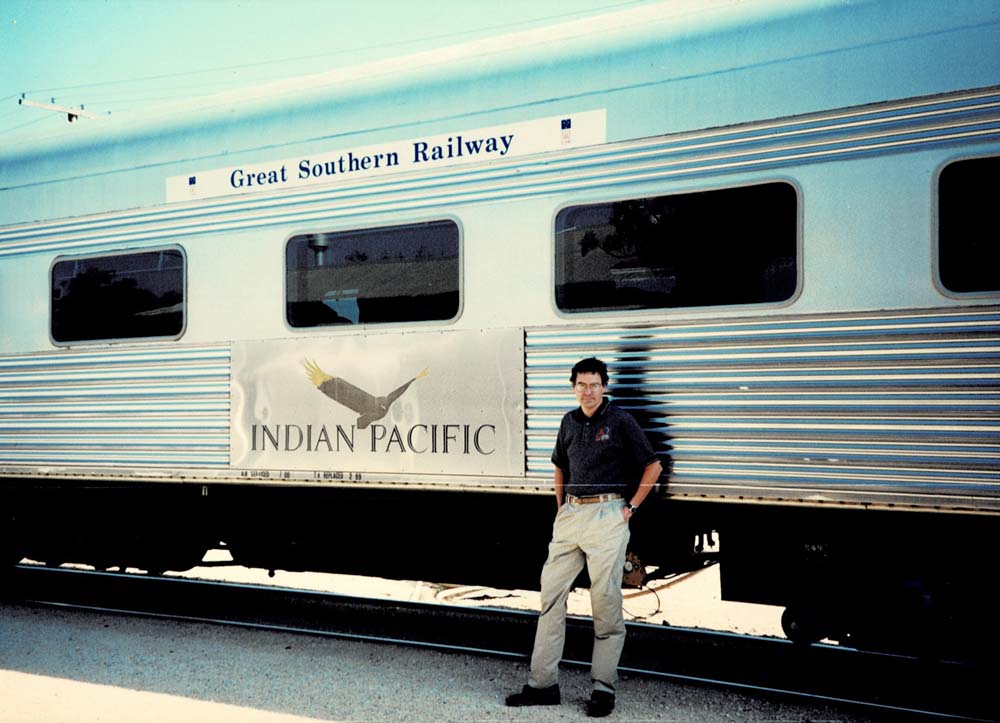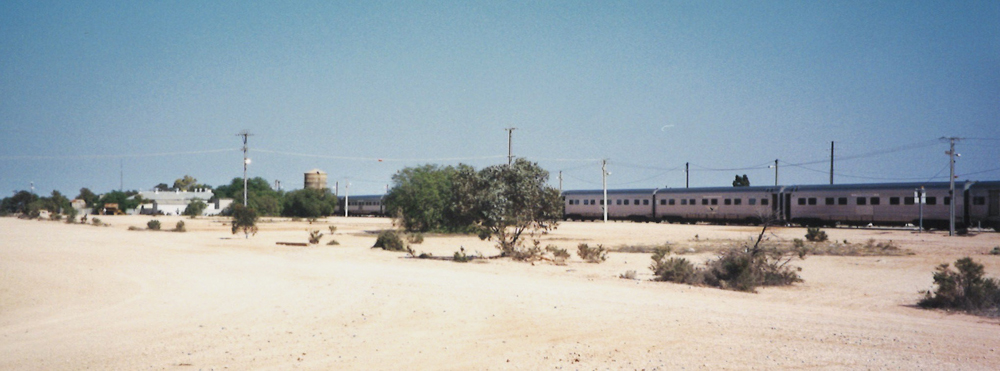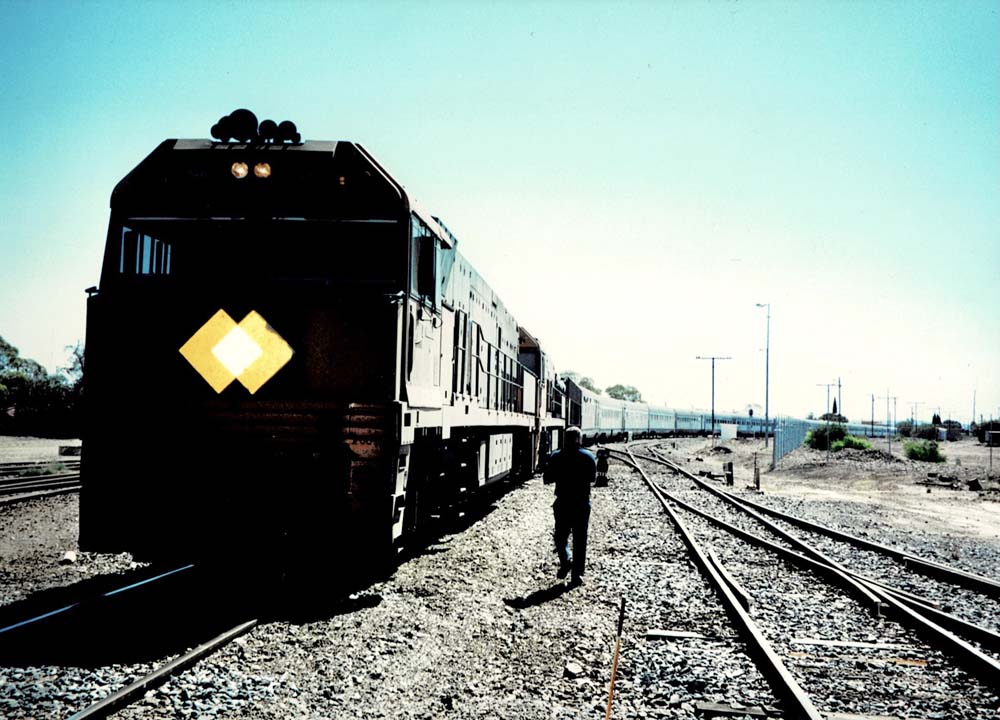Trains David Lassen’s pick: Indian Pacific
Name of train: Indian Pacific
The route: Sydney-Adelaide-Perth, Australia
Duration: Four days, three nights. The current once-a-week schedule has the train leaving Sydney at 1:55 p.m. on Wednesdays and arriving in Perth at 3 p.m. on Saturdays.

The adventure: This was both adventure and recovery time after covering the 2000 Olympics for Scripps-Howard News Service, which was 16 days of 16-hour days (I loved every minute, but it was exhausting). I also enjoyed a remarkable bit of good fortune: When I attempted to book a first-class roomette, they were sold out — not surprising, given the surge in tourism the country experienced around the Sydney Games. I settled for booking accommodations in the economy Holiday class. Knowing I planned to write a travel story for my newspaper about the trip, as it drew nearer, I contacted the Great Southern Railway, explained my upcoming trip, and asked if it would at least be possible to arrange for one meal in first class so I could describe the experience. I promptly received a cheerful message in return: “Thank you for your interest! You have received a complimentary upgrade to First Class.”
Thus upgraded, I found myself in a reasonable facsimile of a mid-1960s U.S. roomette as I left Sydney for the lengthy journey. (The cars were built in the 1960s and 1970s by Commonwealth Engineering under license from Budd.) As my story of the time notes, the difference between Holiday and First Class was as clear as the difference between the wood and plastic finishes of the cars. Then as now, the trip was run something like a cruise ship on land, featuring long en-route stops where passengers can take off-train excursions or enjoy “experiences.” Then, one was in Broken Hill, probably Australia’s most famous mining community; a location called Cook (more on that momentarily); and another mining town, Kalgoorlie. There was also an extended stop in Adelaide, the city that’s roughly at the midpoint of the trip.

While the trip covers a wide range of Australian landscapes — cities, suburbs, mountains, farmland — the most distinctive attraction is, ultimately, nothing. A large portion of the trip crosses the Nullarbor Plain, the scorched, barren desert at the center of the Australian continent.
(Like Eskimos with snow, Australians have a long list of terms for this landscape, or remote areas in general: the Red Center, the Back of Beyond, the bush, the never-never, and, of course, the outback.)
During lunch, one of the Aussies looked out the window and said, “It rains here once every three years.” This area is so featureless that the Indian Pacific’s route features the world’s longest section of straight track — 328 miles. It is broken by a short bend, then another 100-mile straight.

Which brings us back to Cook. It sits on that 328-mile straight. The train makes a 2-hour stop for fuel and water there, at what once was a railway town with its own hospital and school. By 2000, it was a collection of empty buildings with two residents, one store catering to train passengers, and a lot of nothing. It was more than 100 miles to the nearest paved road or the next residence. I bought a postcard to send to friends (the Cooks, as it happened) in the U.S., filled it out, and asked about mailing it. The woman at the store said, “If you do, it won’t go out until Sunday.” This was Wednesday. I mailed it from Perth.
Now, if you see a little of the Nullarbor, you’ve seen a lot. But to be honest, that was fine with me. Remember that I was coming off that 16-days-of-16-hour-days schedule at the Olympics. For much of the trip across the plain, I simply slept. By the time we reached Perth, I was recharged enough for the rest of my two-week post-Olympic vacation.
And when I wasn’t sleeping, I was meeting Aussies, perhaps the world’s most welcoming people — I was invited to visit folks all over the country — or eating. The First Class dining car was, well, first-class. The signature meal, at least back then, was kangaroo steak. (It was good, and no, it didn’t taste like chicken.)
My greatest memory, though, may still be from the first night on board. I awoke in the middle of the night and, keeping the light off, opened the window shade. Since we were in the middle of nowhere, the night was pure black — and the sky was full of stars, the way you rarely see them if you live in an urban area. Most prominent were the five bright stars of the Southern Cross, a constellation that serves as a constant reminder that you are in a different hemisphere. It was spectacular.
Insider tips:
The experience has changed quite a bit since my trip in 2000, particularly in terms of price. Back then, there were three ways to go: coach, A$459 (at a very favorable exchange rate, $252 U.S.); Holiday sleeper, A$779 ($428); First Class, A$1,145 ($629). Now, it’s very much a luxury cruise-like experience: classes are Gold, Gold Premium, and Platinum, with peak-season prices per person from A$3,425 to $7,060 (as of mid-April, $2,203-$4,541 — the exchange rate is still pretty good). Low season is A $2,605 ($1,676) to A$5,925 ($3,811). If you want to go, start saving.
Still, if you can afford it, you’ll long remember looking out the sleeping-car window at that spray of stars. And give yourself some time to explore Perth and the West Coast; I still fondly recall the drive south to Margaret River (wine country, and a beautiful area) and Cape Leeuwin, where the Indian and Southern oceans meet.











Thanks for an opportunity to relive my I-P experience of 10 years ago. Vividly recall both Cook and Kalgoorlie as well as the great food and friendly Aussies.
Rode the Indian Pacific in November 1992. Fondly remember the stop at Cook, as that’s where I was invited up for my only cab ride in Australia. Lots of straight track for the next hour or so!